The Hermetic Revival: 7 Ancient Principles For Self-Mastery

The Hermetic Revival: 7 Ancient Principles for Self-Mastery
The universe runs on natural laws. Apples fall. Birds fly. We live. We die.
When we take the time to understand these laws, we can use them. We can leverage them. We can push against gravity to fly. We can use the knowledge one day we must die, to live better lives.
And since the very beginning of civilization, the wisest of us have been united by this pursuit of discovering what these natural laws are, so we can learn from them and use them to experience more happiness, meaning, and control over our lives in the time we do have.
These days, this pursuit manifests as the top shelf of the self-help and personal growth sections at the bookstore. But nearly 2,000 years ago, when these themes and ideas would get you killed for heresy and blasphemy, they were discussed in whispered tones and passed down only from a master to their student in moments extreme trust.
However, through effort of preservation and excavation we are able to get look into our philosophical past and a once-great tradition, which lead to an overall greater understanding of the universe, our place in it, and catalyzed the Italian creative renaissance, influenced the American revolutionaries, and now shows up in much of modern day personal growth media.
This tradition, is Hermeticism.
What Is Hermeticism?
The hermetic tradition represents a non-Christian lineage of Gnosticism, which is the name for a variety of ancient religious ideas and systems dating back to the 1st and 2nd centuries A.D.
The surviving writings of Hermeticism are known as the Corpus Hermetica, which is composed of a series of letters from a master, Hermes Trismegistus, wherein he tries to enlighten his disciple. These letters were lost to the western world after classical times, but survived in the Byzantine libraries.
In the Fifteenth century, the letters were rediscovered and translated into Latin by the court of Cosimo de Medici (yes, grandfather to Lorenzo de’ Medici, the patron of Leonardo Da Vinci and several other renaissance artists). These letters were so influential during the time that they acted as a catalyst in the development of Italian Renaissance thought and culture.

Inspired by this wave of innovation, these timeless principles were resurrected again by the Freemasons and showed up in the teachings of the American revolutionaries.
But why is this philosophy so influential?
Being a Gnostic tradition, Hermeticism is a school of ideas and systems that focuses on the pursuit of Gnosis — meaning the pursuit of empirical knowledge pertaining to spiritual mysteries.
You see, in a historical world where all major religions had gatekeepers to the spiritual experience, the Gnostics, and later Hermeticists, rebelled in thought.
They took the pursuit of the mystical experience into their own hands and developed a way of thinking about the world that helped them communicate with and directly experience what they call ‘a more visionary reality.’
Which begs the question, what kind of man was Hermes Trismegistus, and what made him so widely influential?
Who is Hermes Trismegistus?

“Master of all arts and sciences, perfect in all crafts, Ruler of the Three Worlds, Scribe of the Gods, and Keeper of the Books of Life, Thoth Hermes Trismegistus — the Three Times Greatest, the “First Intelligencer” — was regarded by the ancient Egyptians as the embodiment of the Universal Mind. While in all probability there actually existed a great sage and educator by the name of Hermes, it is impossible to extricate the historical man from the mass of legendary accounts which attempt to identify him with the Cosmic Principle of Thought.”
Manly P. Hall — The Secret Teachings of All Ages
Hermes Trismegistus is the purported author of both the Emerald Tablet and the Corpus Hermeticum, and one of those characters in history that blend the mythical with the actual.
Hermes Trismegistus is the author who represents a combination of the Egyptian God Thoth and the Greek God Hermes, who were both gods of writing and magic in their respective cultures.
Hermes was credited with tens of thousands of highly esteemed writings, from both Egypt and Greece, suggesting a shared cultural tradition between the two in the man. And while the Italian Renaissance believed Hermes to be an Egyptian Priest, it is possible the Corpus Hermetica was actually written by a collective unknown authors who were Platonistic and Stoic Greeks.
All that can be said for sure, is that the 7 Hermetic Laws shared in the Corpus Hermetic have been found in part in the Nag Hammadhi library in 4th century Egypt A.D., and even in the Emerald Tablets of Thoth — proving a common thread of some sort.
Whether Hermes actually existed, was in fact both the Greek God Hermes and the Egyptian God Thoth, and represented a shared a cultural link between Ancient Greece and Egypt — there is no way to know. Especially since practicing sincerely the following teachings of the “three times great” mystic, what it means to actually exist will change.
What we can be certain of, is that these principles of Hermeticism held immense value for these ancient cultures, whoever their author may be. And whenever they resurface in culture, they act as a catalyst to creative renaissance, revolutions, and cultural regeneration.
These 7 Laws are some of the oldest and most influential systems of thinking, which will expand horizons, broaden possibilities, and aid one in the pursuit of fuller, happier, more meaningful and longer life — as much today as they ever have.
While reading these principles, remember that they were written thousands of years ago, before any modern science verified their unusually accurate (and esoteric) claims.
The 7 Hermetic Principles for Self-Mastery
1. The Principle of Mentalism:
The All is mind; The Universe is Mental.

This first principle embodies the truth that ‘All is Mind.’ Meaning, the Universe itself, at an underlying and foundational level, is Mental. That all phenomena of life, matter and energy of the material universe are thoughts of an infinite and universal, living Mind. Which means all things share a connection in the fact they exist within the Mind of ‘THE ALL’, as it is put, and therefore are all subject to the laws of created things. This Mental Universe, for the sake of experiment, could be explained as an infinite intelligence, intelligent field, and even the nature of consciousness itself. Creating a dialogue of thought, which dances with thought.
The Principle of Mentalism, explains the nature of ‘energy,’ ‘power,’ and ‘matter’ as being subordinate to the Mind, as it shows up within ourselves and the pervading nature of all things.
When you view everything you think, and therefore do, as an interaction of thought with thought, you develop an understanding of the first principle of Mentalism, which allows you to grasp the the laws of the Mental Universe, being the 7 Hermetic Principles, and apply them to your well-being and personal advancement. Like using the knowledge of the Principle of Polarity, which is the fourth Hermetic principle, to understand that love and hate are the same intensity of emotion, varying only in degree. And through the power of the mind, can be transferred from one degree to another by the power of objective thinking and conscious choice. The two emotions maintain their intensity, only changing in degree to suit whatever outcome and experience you most desire. This is possible by the law of Mentalism to influence other laws, and the ability for the mental plane to influence what happens on other planes.
In Hermeticism, there are many descriptions of different planes, levels or dimenions of existence, that overlay atop one another. They are usually depicted as layers of a concentric circle, where the inner-layers are more foundational and influence the outer layers. In Hermeticism, there are three Great Planes: the mental plane, physical plane, and spiritual plane. Which have varying lesser-planes between them that differ in degrees between undifferentiated matter and spirit.
From a first person perspective, the mental plane is experienced simply as thought, insight, intuition, and reason. But wisdom of how this plane corresponds with other, unseen, or causal planes, tells us that there may be more to our thoughts than we perceive. That our thoughts are not tied simply to the physical plane, and have an effect on an energetic and spiritual level, which is less obvious but still very real.
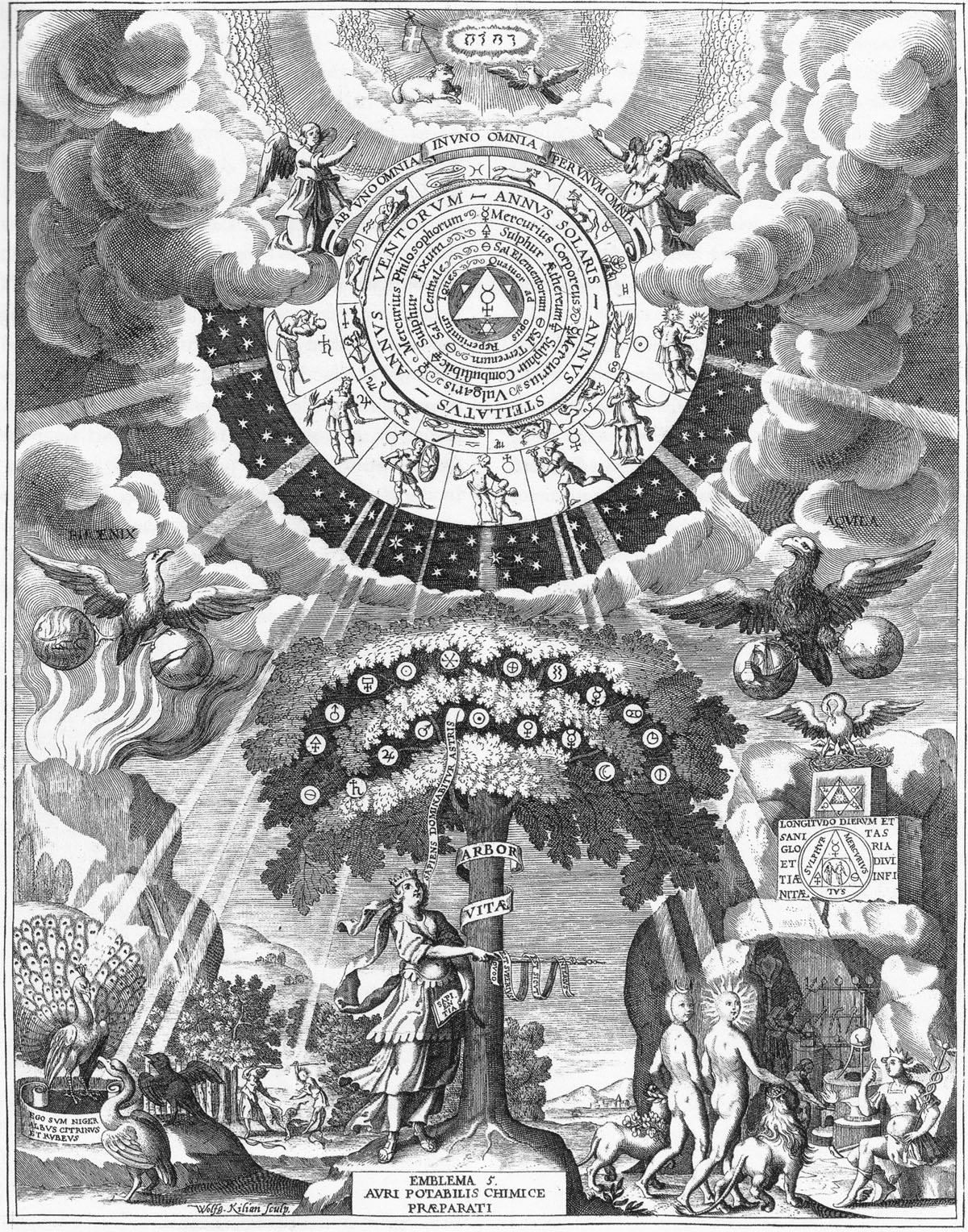
This principle is what allows the student to apply their mental faculty to leverage all other laws, almost perceiving thought as the operating system, that allows us to interface with other layers of being. To anticipate other natural and energetic laws, and cause them to occur in ways that benefit us. Making a science of all phenomena of the universe, because all other planes still exist within the realm of a Mental Universe — and therefore can be reasoned with. Through this principle David can take down Goliath, man can explore the Moon, and we can reason with all phenomena of the Mental universe.
2. The Principle of Correspondence:
As above, so below; as below, so above. As within, so without; as without, so within.
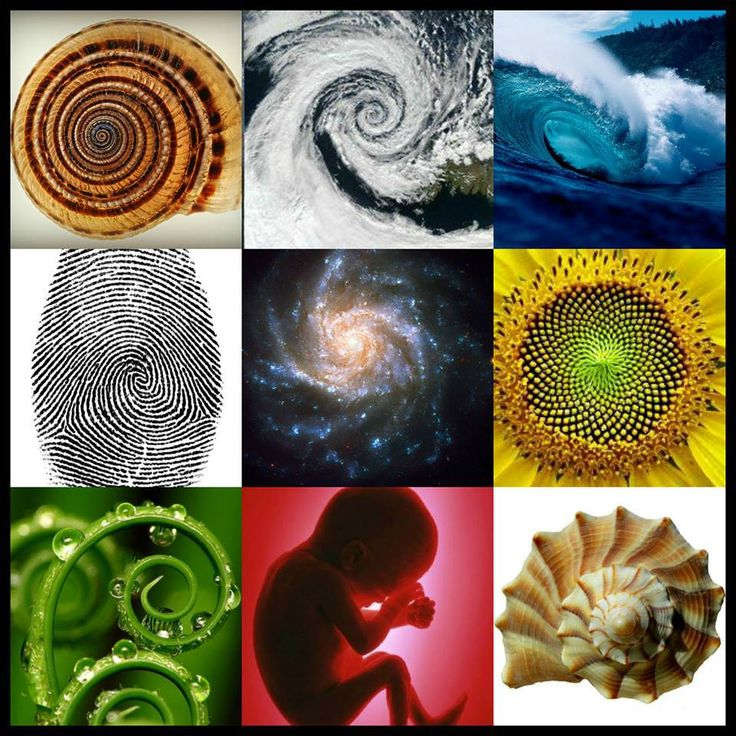
This principle embodies the truth that there is always a correspondence between the laws and phenomena of various planes that manifest as being and life. Grasping this principle is what allows one to deduce the hidden solutions to problems by looking at what exists a layer above, and below the problem, to infer the pattern and shadow nature of what is in-between.
Of course, there are planes and phenomena beyond our knowing, as we are limited to the spectrums of visible light and audible sound, but by witnessing the patterns that do exist in our dimension we can deduce what may exist in higher and lower ones.
Just as the knowledge of Geometry allows one to measure the cosmos and map its movements, as a dance of spheres and spirals. Observing the Principle of Correspondence, we can come to know the whole of the Universe by exploring the higher and lower nature of things, which surround the mystery. And likewise, discover more of ourselves, by experiencing and studying the world we are integrally a part of through the pursuit of Gnosis. The micro is in the macro, and vice versa.
3. The Principle of Vibration:
Nothing rests; Everything moves; Everything vibrates.

This principle embodies the truths that ‘nothing rests,’ ‘everything is in motion,’ and ‘everything vibrates.’ It explains that matter, energy, and even spirit, are simply varying rates of vibration.
A classic example of this being frequency in which the seven octaves of music, tuned up 44 octaves, miraculously becomes the spectrum of visible light (passing through states of being the buzz pitch of insects, ultra-sound, plasma, ether, hyper sound, and even octaves of heat.) While they change manifestation, the vibrations maintain the same correspondence, the difference being only in measurement and energy as frequencies slide up the electromagnetic spectrum.
At the highest rates of vibration the rate and intensity are so rapid it appears to be motionless, like a spinning wheel appearing stable. And at the lowest levels of vibration, objects move so slowly they appear to be totally at rest. Between these two, exist infinite manifestations all occurring at varying octaves of vibration, each with their own phenomena.
Knowing this, Hermeticists believe that even thoughts have their own rate of vibration, and can be controlled like tuning an instrument, to produce various results for the aim of self and environment mastery. As your understanding of vibration, frequency, harmony and resonance increase, so too shall your power over yourself and your world.
4. The Principle of Polarity:
Everything is dual; Everything has poles; Everything has its pair of opposites; Like and unlike are the same; Opposites are identical in nature, but different in degree; Extremes meet; All truths, are but half-truths; All paradoxes may be reconciled.
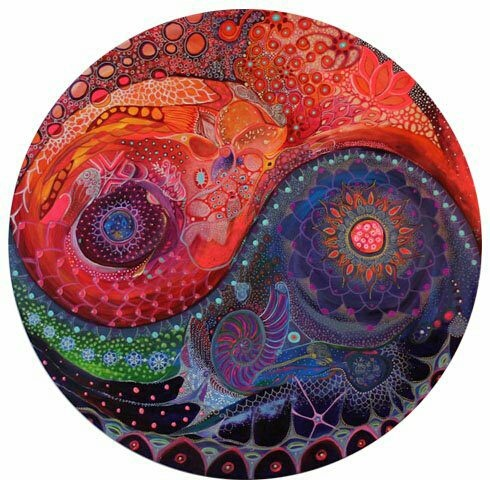
The fourth principle embodies the truth that ‘everything has its pair of opposites,’ ‘everything has two poles,’ and exists in a state of ‘duality.’ But the true nature of this principle is that ‘opposites are the same, only varying in degree.’
It explains that there are two poles in everything and that opposites are really only two extremes of the same thing, the difference being only in degree. An obvious example being hot and cold — both being temperature, varying only in degree. And that there is no clear crossover moment when hot stops being hot, and starts being cold and vice, versa with no absolutes on either end. The same can be said of ‘light and darkness’ ‘hard and soft’ ‘big or small’ and even ‘love and hate.’ With ‘love and hate’ there is no clear point where one emotion becomes another, or when it passes through ‘like’ ‘dislike’ or ‘indifference.’ All are merely our perceptions of the degree. And the principle of Polarity exists to explain these paradoxes.
This principle is important to Hermeticists, because it suggests we can change the polarity of a degree of emotion, by recognizing it is the same and choosing the degree which best suits our needs.
Similar to how we can involuntary and rapid transitions in our psyche between love and hate, like and dislike, you can choose to experience these transitions by use of your willpower for the betterment of your life and others. That the difference is not a hurdle to be surmounted, but two expressions of the same thing, differing only in degree, to choose between. This practice is the art of Mental Alchemy.
5. The Principle of Rhythm:
Everything flows, out and in; Everything has its tides; All things rise and fall; The pendulum swing manifests in everything; The measure of the swing to the right is the measure of the swing to the left; Rhythm compensates.

Between the opposite poles of the principle of Polarity, is the pendulum swing of The principle of Rhythm. This principle embodies the truth that everything exists in a measured motion, from here to there, moving in and out, swinging backward and forward, the rise and fall of the tides, ebbing and flowing and never truly sitting still. Never stopping, always changing.
This principle controls the cycle of life and death, creation and destruction, rise and fall, and of course manifests in our mental states.
When you are in tune with the Principle of Rhythm and understand that every mental state exists in Rhythm, always ebbing and flowing, you can learn to use this principle to your advantage by polarizing yourself to the degree you desire. Then, through awareness of this principle and how it manifests, holding yourself there to keep the pendulum from swinging you backwards to its extreme.
Imagine going to an event that you know holds a lot of emotional significance for you, and checking in with yourself there. Knowing, you are experiencing a high and that this state is unsustainable, you can slot in time for transition to keep yourself from crashing, knowing the Principle of Rhythm is affecting or will affect you. Likewise, with times of stress and grief, giving yourself time to return to neutral before ramping back up again.
Know that things you lose, will come back, and that things you own now, will disappear later.
Being able to appropriate these smooth transitions can be the difference between days of recovery (mentally, physically, and emotionally) and smooth grace periods between times of intensity. Knowing when to retreat and when to return is one of the many keys to self mastery.
Through heightened awareness gained by understanding this principle, you can experience transcendental states of consciousness to rise above the swing of the pendulum. Rhythm will have an effect on you one way or another, but with awareness you can use it to propel you forward and ride it back to recovery.
All people who experience self-mastery do this to some degree, but those who exert their will upon this principle are able to act from a place of purpose as opposed to letting the pendulum swing them into reactivity.
6. The Principle of Cause & Effect:
Every cause has its effect; Every effect has its cause; Everything happens according to law’ Chance is but a name for law not recognized’ There are many planes of causation, but nothing escapes the law.
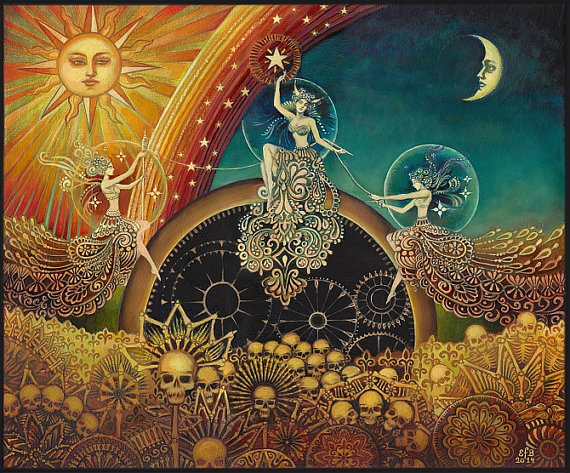
This principle embodies the fact that there is a ’Cause for every Effect;’ and an ‘Effect for every Cause.’ Meaning, that nothing merely ‘happens for no reason,’ and that there is no such thing as ‘chance.’ In harmony with the principle of Correspondence, there are higher planes dominating lower planes and nothing escapes the Principle of Cause & Effect. Nothing happens without explanation.
The empowering use of this principle is to make the conscious choice to rise above the plane of thought you currently occupy to become your own Cause, and not just an Effect of others and the situations you find yourself in. That is to say, be your own first mover as opposed to someone who merely reacts to circumstance. I know I am out of alignment with this principle, when I find myself feeling reactive, stressed and frazzled; waking up only to handle and deal with the things that come my way. Instead, of going out of my own way to determine and create what I desire to experience. To put into action the first move, which will bring me the result I desire, not as a surprise, but a product of calculation.
So, I know that if I want to be a better writer, I clearly need to write each day and read more often. As opposed, to not, and resigning myself to merely reacting to the consequences of not having done the work and experiencing the problems that inevitably arise when you are not pursuing your highest calling.
Of course, when you are on the quest to become someone who has mastery over their self, and can control their moods, character, and the environment around them — you will naturally have to obey the causation of higher planes in accordance to this principle. But the important distinction is that having awareness of this will give you the ability to rule on your own plane, without resigning to the roles of the dunce or victim.
7. The Principle of Gender:
Gender is in everything; Everything has its masculine and feminine principles; Gender manifests on all planes.

This principle embodies the fact that both the masculine and feminine exist in all things. Not just in sex, but in the creative nature of all things, on all planes. In harmony with the principle of Correspondence, this means that the masculine and feminine exist not only in the physical plane, but also the mental, and the spiritual as well. The principle of Gender plays a role in all things generation, creation, and regeneration — nothing can come into being without the use of this principle.
The masculine is the penetrative, assertive, progressive, conquesting, explorative energy that drives progress. The feminine is the receptive, sacred, treasured, protective energy, that maintains tradition and honors the priority of what is most important, while nourishing that which is most essential to life.
Too much masculine energy, without a balance of feminine, leads to a growth of power to the extreme of reckless abandon — where we lose perspective of what is most important and forget the principles which began the conquest in the first place. While, too much feminine energy, without a balance of the masculine, leads to a life grounded so deeply in the present, that our lives become determined by the cycles and external circumstance out of our favor.
All beings contain this great Principle within them, as two parts. Every male has feminine energy, and every female has masculine energy. In sex we see the interplay of these energies. In our moods, actions, attitudes, and personalities we see the dance of these energies within ourselves.
The most potent use of this principle is how Gender is responsible for creation, generation, and regeneration on the mental and spiritual planes, and not just the physical. True progress is possible through the balancing of the two energies of Gender in oneself, relationships, and environment. By examining how present are we with our lives. How focused we are on the future. What we sacrificed for our achievements. How much do we protect and honor what is our highest priority. How far from home have we traveled, in pursuit of what we desire the most. How much are we giving and how much are we receiving. Asking ourselves if these energies are in balance.
To choose the middle path between these extremes of the present feminine and future-driven masculine and seek balance in all things, is the key to using all 7 Hermetic Principles principles to full effect and achieving lasting self-mastery, without straying too far from the path.
A User’s Guide for Gnosis
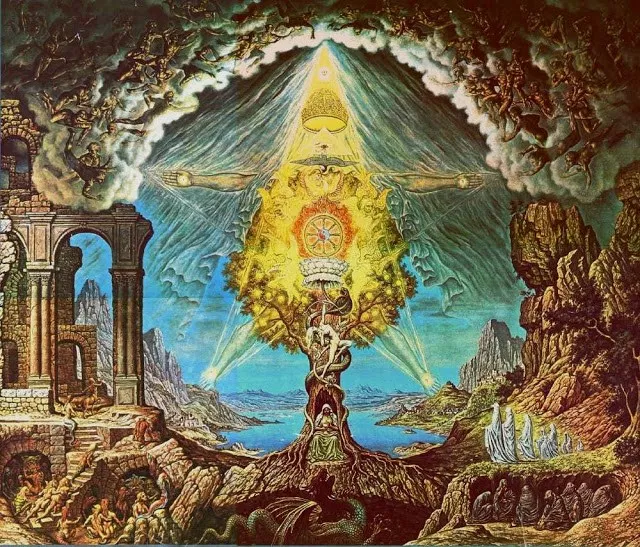
Each of these principles exists in nature, and applies directly to our mental, emotional, and spiritual states. They give us a map of hidden territory both within and without. Having awareness of these principles, and how the affect one another, gives us an understanding of our own patterns, what holds influence over us, and how we can use these principles and their laws to direct our own lives.
The 7 principles of Hermeticism teach us how to use our minds to communicate with the Mental Universe. All dreamers imagine a realm of higher aspiration than ours and the base and gross matter we come from. Whether that be Plato’s World of Forms, a Christian Heaven, the New Age Astral Plane, or the Esoteric notion of a Higher Dimension — without trying to label or name them, these principles help us understand the phenomena of the planes above us, the planes below us, and how the patterns of how they intercede can illuminate what we cannot see. As well as, how we can tune our own vibrations and experience the ease of being in harmony with forces that naturally occur at higher vibrations. To choose the Polarity we wish to experience most knowing all choices are open to us. To remain where we choose, knowing how to transcend the pendulum swing of Rhythm. To realize that we are always being effected, that nothing happens to us by chance and knowing we can choose to cause the effects that we most prefer. And that in order to benefit from all of these principles, we must seek balance of both the masculine and feminine within ourselves to create our ideal realities, and wield this power without straying too far from the middle path.
These principles have served as tools for the priests and pharaohs of Egypt, the philosophers of Greece, the artists and inventors of the Italian Renaissance, and the revolutionaries and leaders of America (among others to can be sure.)
But remember: these are Gnostic principles. By themselves, these principles are useless, but when you creatively apply them, you can achieve any endeavor you dedicate yourself to. Truly understand them, by experiencing them for yourself.
So, here are some questions to help you apply the 7 Hermetic Principles through direct inquiry and experience gnosis in your own life.
Questions for Applying the Principle of Mentalism:
Have you ever experienced the effect of mind over matter? Using the power of visualization to make yourself feel less hot, or cold. To taste a fruit in your mind, or experience a memory as if it’s happening now.
What are things you are curious about and can learn about, even though they are not directly or physically in front of you right now?
Have you ever had the same idea as someone else, or discovered something you thought was unique, only to realize it’s been written about before? Our thoughts are connected and this is one way we can tangibly understand that our thoughts are not our own and do not originate within us.
Have you ever focused your awareness somewhere on your body and felt it tingle, or the intensity of sensation increase there, simply because you directed your mind toward it? This is a demonstration of the common phrase, energy goes where attention flows.
Questions for Applying the Principle of Correspondence:
Have you ever dealt with a personal problem, and begun to feel like the situations you find yourself prod at the issue repeatedly until you resolve it? The themes in our lives tend to re-occur and correspond on many levels, until we learn our lesson.
Have you ever noticed a pattern in nature, that repeats whether in the bloom of a flower, or shape of a river, and wonder how these seemingly unconnected events share the same geometry? All things grow by the same sets of natural laws.
Have you ever felt like you were a part of something larger, that you may not even be able to see or perceive, yet you are directly contributing to it? We, ourselves, are a part of the correspondence.
Questions for Applying the Principle of Vibration:
Have you ever listened to a song and felt a certain way about it, like some chords are pleasant to hear, and others feel inherently wrong? The way things vibrate effects us at a foundational level.
In the same way, have you ever looked at a painting or a combination of colours and found it to be beautiful, and at other times find it to be distressing? The expression of certain vibrations, even that of colours, can affect us on an emotional level.
Have you ever attracted something into your life, repeatedly by obsessing over it? The phenomena of synchronicity, or manifestation, occurs because of the resonance and harmony between the way things vibrate.
Have you ever felt simply out of harmony with your environment, your job, or the people in your life? As we change, so too do the subtle vibrations of things and we can fall out of harmony with what does not honor where we are at this time in our lives.
Questions for Applying the Principle of Polarity:
Have you ever been in an argument with someone you deeply love and experienced your passion to transform into hate almost instantly, then return back to love later? The Principle of Polarity can confuse our emotions, if we do not control the way we feel to honor ourselves or those we care about.
Have you ever dipped your fingers in water so hot that it shocks the nerves and feels cold at first? The way we experience the shock of extremes of polarity are similar in the mind and nervous system.
Have you ever focused on what it would feel like, to feel a certain way, then began to feel that way spontaneously? Our minds don’t know the difference between what is imagined and what is experienced and we can self-author our own experience if we choose to. This may feel like cheating, but sometimes it is necessary in order to consistently be in a state of peak performance to accomplish our goals.
Questions for Applying the Principle of Rhythm:
Have you ever witnessed a repeating pattern in your own life or the lives of others? Our lessons tend to re-emerge if we do not learn from them and integrate them well the first time.
Have you ever been to an event, or a party, and had the time of your life. Then, have a tremendous comedown the next day or even few days, even if you were sober the entire time? What comes up, must come down, and vice versa. Knowing how to ride your own rhythm gives you the ability to anticipate and plan accordingly.
Likewise, have you ever spent several days in isolation then felt yourself propelled towards adventure and novelty? What is down, will eventually come back again. All things exist in cycles and the key to enjoying them is understanding them and knowing how to benefit them, without taking them personally.
Questions for Applying the Principle of Cause & Effect:
Have you ever felt out of control, or completely blindsided by something in your life? Little things lead to big things. In hindsight, sometimes we can understand what caused what happened to us, and learn from it for next time.
Have you ever wanted to accomplish something that felt too big, or too unrealistic at the time? In the same way, we can start small with what we want to accomplish, knowing that these littles causes will lead to new effects. Which will put on further on the path of what we want to achieve, simply as a rule of nature.
Have you ever felt reactive, like your entire days were consumed by dealing with things that were simply happening to you, with no time to create anything new? When we get caught up in the weeds of our to-dos, we can lose perspective of how today we are receiving the effects of causes that happened earlier. And even worse, lose perspective on how the wins of today will create the causes of tomorrow.
Questions for Applying the Principle of Gender:
Have you ever felt like you were so caught up in the future and the fantasy of your desires, that you never took the time to do what was necessary to experience them? Too much masculine energy, without enough feminine presence, can lead to unhealthy fantasy and disillusionment.
Have you ever felt so present, so at ease, and hedonically enjoying the now, that you never cast your gaze on what would happen tomorrow? Too much feminine energy, can lead to such a deep sense of presence that we forget to create the causes today for the effects we want to experience tomorrow.
Have you ever been addicted to one extreme or the other? True self-mastery comes from being able to tread a middle path. Knowing that this is where we are able to most accurately direct the path of our life and show up in a way that is most authentic to who we want to be.
These questions are a great place to get started applying the 7 Principles to your life, but don’t stop here. Use your knowledge of these principles to create your own experiments and take your own notes through life. Gain direct experience of what you are curious about, without requiring spiritual permission from anyone other than yourself. Pursue that which you desire, so long as it does not bring harm to another.
And along the way, remind yourself of these principles at every turn. Resurrect them every chance you get. Use them to sharpen your will, develop self-mastery and create what you wish to experience in this life, without compromise.


